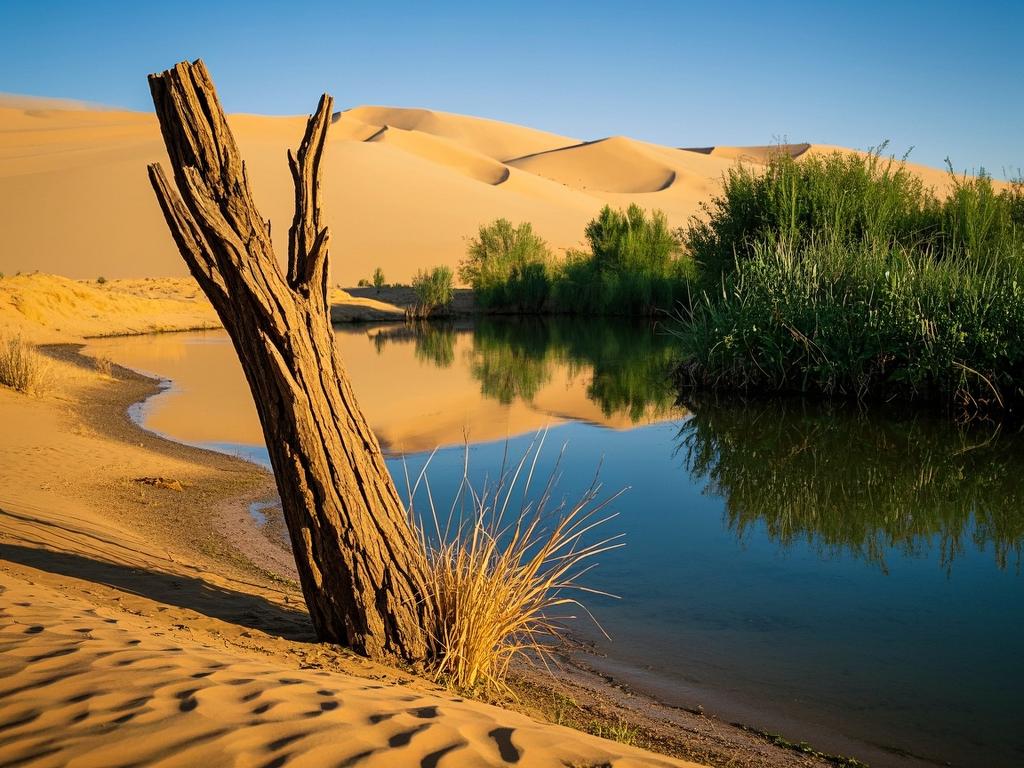
# The Vast Deserts of the Middle East: Oases of Life in Decline
The deserts of the Middle East have long been a symbol of both harsh beauty and untapped potential. These vast arid landscapes, stretching across countries like Saudi Arabia, Iraq, and the United Arab Emirates, have been home to unique ecosystems and ancient civilizations. However, in recent times, these oases of life seem to be facing a precipitous decline, and it's a situation that demands our immediate attention.
Let's start by looking at the historical significance of these deserts. For centuries, they have been crossroads of trade and culture. The Silk Road, that epic network of trade routes, passed through parts of the Middle Eastern deserts, facilitating the exchange of goods, ideas, and technologies between the East and the West. Cities like Petra in Jordan, an ancient Nabatean metropolis carved into the desert rock, bear testament to the ingenuity of the civilizations that thrived in these arid regions. "The sands of time have washed over these lands, yet the echoes of the past still resonate," as we marvel at the remnants of their grandeur.
But what's happening now? Well, climate change is the elephant in the room. Rising temperatures are making these deserts even more inhospitable. According to recent data, average temperatures in the Middle Eastern deserts have increased by about 2 degrees Celsius over the past few decades. This is no small feat. It's disrupting the delicate balance of the desert ecosystems.
Take the oases, for example. These pockets of greenery in the midst of the desert are crucial for supporting life. They rely on underground water sources that are now being depleted at an alarming rate. In some areas, the water tables have dropped by tens of meters in just a few years. That's like a life - support system slowly failing. "We're watching as these oases, once the jewels of the desert, turn into parched husks, one drop of water at a time."
This decline has far - reaching consequences for the local wildlife. Many species that are endemic to these deserts are now on the brink of extinction. The Arabian oryx, once thought to be lost forever, has made a comeback thanks to conservation efforts, but it's still facing an uphill battle. Other small mammals, reptiles, and birds that depend on the oases for food and shelter are disappearing at an alarming rate. A recent study showed that the population of certain desert bird species has decreased by over 50% in the last decade.
Economically, the situation is no less dire. The tourism industry, which was once booming in these desert regions, is taking a hit. Who wants to visit a desert that's turning into a wasteland? Tourists are drawn to the unique beauty of the deserts, but if that beauty fades, so does the economic incentive. In some areas, tourism revenues have dropped by as much as 70% in recent years.
Politically, the decline of the desert oases is adding fuel to the fire of regional tensions. Water scarcity is a major issue. As water sources dry up, there's competition between neighboring countries. This could potentially lead to conflicts over a precious resource. "We're sitting on a ticking time bomb, where a lack of water in these deserts could spark a powder keg of international disputes."
So, what can be done? Well, first and foremost, we need to invest in sustainable water management. This means finding innovative ways to conserve water and recharge the underground aquifers. Technologies like desalination, while energy - intensive, could be a part of the solution. We also need to focus on reforestation in the desert fringes. Planting drought - resistant trees can help to stabilize the soil, reduce erosion, and even influence local microclimates.
Moreover, there's a need for international cooperation. These are global problems, and they require a global solution. Countries in the region, along with international organizations, should come together to pool resources and expertise. "We can't let these deserts become a lost cause. It's time for a united front to save these oases of life before it's too late."
In conclusion, the vast deserts of the Middle East, once oases of life, are in a downward spiral. Climate change, water depletion, and the resulting impacts on wildlife, economy, and politics are all intertwined. It's a complex problem, but one that we must address. If we don't, we'll be witnessing the slow death of these unique and important ecosystems. Let's act now, before it's too late to turn the tide on this desert decline.

